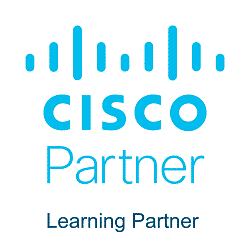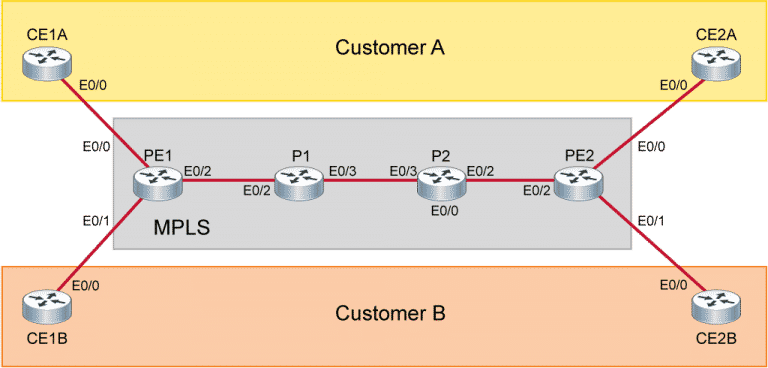MPLS– Implementing Cisco MPLS

The MPLS Implementing Cisco MPLS Course focuses on one of the most centric network technologies. MPLS is a technology that has established a new network layer for service providers worldwide. For many service providers and enterprises, Multi Protocol Label Switching is a way to deliver new applications over their IP networks, while consolidating data and voice networks. The continuous search by enterprises for value-added services has highlighted the limit of technologies characterized by the conventional forwarding of IP packets. MPLS represents a mature and effective technological response to this limit. The course will cover technologies and implementations associated with MPLS, such as traffic engineering (TE), virtual private networks (layer 2 VPNs), and Virtual Private LAN Services (VPLS). The practical laboratory part, a must in the Vega Training training offer, takes place on real infrastructures where practical implementation and troubleshooting scenarios will be addressed.
Course Objectives
The following is a summary of the main objectives of the MPLS Implementing Cisco MPLS Course :
- Understand the fundamental concepts of MPLS and its application in modern networks.
- Learn MPLS label assignment and distribution and LDP neighbor discovery.
- Configure and monitor MPLS on Cisco IOS platforms and troubleshoot MPLS issues.
- Implement and manage MPLS VPN using mechanisms on Cisco IOS platforms.
- Gain knowledge on MPLS Traffic Engineering and its operations on Cisco IOS platforms.
- Explore the integration of MPLS with Quality of Service (QoS) mechanisms.
- Learn about the security aspects and best practices in MPLS networks.
- Gain hands-on experience with troubleshooting MPLS VPNs and traffic engineering issues.
Course Certification
This course helps you prepare to take the:
Cisco Enterprise Certifications.
Course Outline
- MPLS Concepts
- Introducing Basic MPLS Concepts
- Introducing MPLS Labels and Label Stack
- Identifying MPLS Applications
- Label Assignment and Distribution
- Discovering LDP Neighbors
- Introducing Typical Label Distribution in Frame-Mode MPLS
- Introducing Convergence in Frame-Mode MPLS
- Frame-Mode MPLS Implementation on Cisco IOS Platforms
- Introducing CEF Switching
- Configuring Frame-Mode MPLS on Cisco IOS Platforms
- Monitoring Frame-Mode MPLS on Cisco IOS Platforms
- Troubleshooting Frame-Mode MPLS on Cisco IOS Platforms
- MPLS Virtual Private Network Technology
- Introducing Virtual Private Networks
- Introducing MPLS VPN Architecture
- Introducing the MPLS VPN Routing Model
- Forwarding MPLS VPN Packets
- MPLS VPN Implementation
- Using MPLS VPN Mechanisms of Cisco IOS Platforms
- Configuring an MP-BGP Session Between PE Routers
- Configuring VRF Tables
- Configuring Small-Scale Routing Protocols Between PE and CE Routers
- Monitoring MPLS VPN Operations
- Configuring OSPF as the Routing Protocol Between PE and CE Routers
- Configuring BGP as the Routing Protocol Between PE and CE Routers
- Troubleshooting MPLS VPNs
- Complex MPLS VPNs
- Introducing Overlapping VPNs
- Introducing Central Services VPNs
- Introducing the Managed CE Routers Service
- Internet Access and MPLS VPNs
- Combining Internet Access with MPLS VPNs
- Combining Internet Access with MPLS VPNs
- MPLS Traffic Engineering Overview
- Introducing MPLS Traffic Engineering Components
- MPLS Traffic Engineering Operations
- Configuring MPLS Traffic Engineering on Cisco IOS Platforms
- Monitoring Basic MPLS TE on Cisco IOS Platforms
Laboratory Activities
- Verifying CEF Switching
- Enabling MPLS
- Change IP TTL Propagation
- Configure MP-IBGP
- Configure the VRF Instances
- Configure RIP as a PE-CE Routing Protocol
- Configure EIGRP as a PE-CE Routing Protocol
- Configure OSPF as a PE-CE Routing Protocol
- Configure BGP as a PE-CE Routing Protocol
- Configure a Central Services VPN
- Configure MPLS Traffic Engineering
- Implement the Service Provider’s and Customer’s IP Addressing and IGP Routing
- Implement the Core MPLS Environment in the Service Provider Network
- Implement EIGRP Based VPNs
- Implement OSPF Based MPLS VPNs
- Implement BGP Based MPLS VPNs
- Implement MPLS Traffic Engineering
Course Mode
Instructor-Led Remote Live Classroom Training;
Trainers
Trainers are Cisco Official Instructors and certified in other IT technologies, with years of hands-on experience in the industry and in Training.
Lab Topology
For all types of delivery, the Trainee can access real Cisco equipment and systems in our laboratories or directly at the Cisco data centers remotely 24 hours a day. Each participant has access to implement the various configurations thus having a practical and immediate feedback of the theoretical concepts.
Here are some Cisco Labs network topologies available:

Course Details
Course Prerequisites
- Attendance at the Cisco CCNA and CCNP Enterprise ENCOR Course is recommended .
Course Duration
Intensive duration 5 days
Course Frequency
Course Duration: 5 days (9.00 to 17.00) - Ask for other types of attendance.
Course Date
- Cisco MPLS Course(Intensive Formula) – On request – 9:00 – 17:00
Steps to Enroll
Registration takes place by asking to be contacted from the following link, or by contacting the office at the international number +355 45 301 313 or by sending a request to the email info@hadartraining.com


